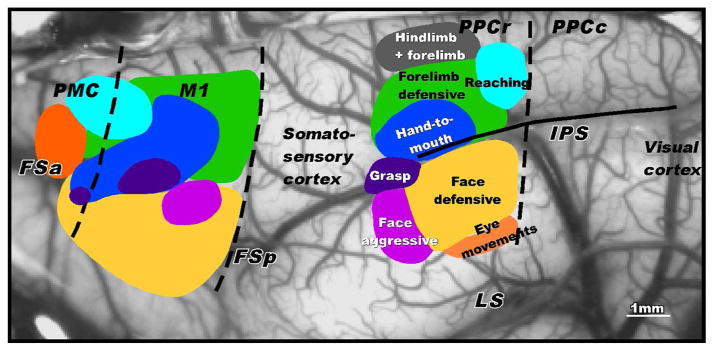Fig. 2.
Movement domains in rostral posterior parietal cortex (PPCr), motor cortex (M1 and premotor cortex (PMC) of galagos. Long train electrical stimulation was used to evoke different complex movements from different regions (domains). In PPCr, hindlimb movements, or hindlimb with forelimb movements, were evoked from the most medial domain. The laterally adjacent domain was characterized by evoked defensive arm movements as if to fend off an attack. More caudally, stimulation evoked reaching movements of the contralateral arm. More laterally, stimulation evoked hand to mouth movements, sometimes with opening of the mouth. Face defensive movements were evoked from more lateral cortex, with eye movements evoked from the most lateral part of the responsive cortex. More rostrally, face and forelimb movements were evoked in patterns that suggested threat response (face aggressive domain). Matching domains were in M1 and PMC. The domains are illustrated on a photograph of frontoparietal cortex. FSa and FSp, anterior and posterior frontal sulci, IPS- intraparietal sulcus, LS, lateral sulcus. Modified from Stepniewska et al., 2005.

